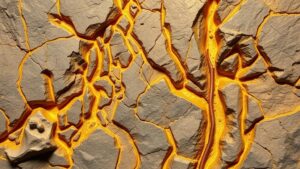The Role of Ore Sorting Machines in Optimizing Gold and Silver Recovery
The Role of Ore Sorting Machines in Optimizing Gold and Silver Recovery
The mining industry continuously seeks innovative solutions to enhance the efficiency of mineral extraction processes. One noteworthy advancement is the use of ore sorting machines in optimizing the recovery of precious metals, specifically gold and silver. These machines enable mines to increase yield, reduce waste, and lower operational costs.
Understanding Ore Sorting Technology
Ore sorting machines apply various technologies to classify materials based on characteristics such as size, shape, and density. primary methodologies include:
- X-ray transmission (XRT)
- Near-infrared (NIR) sorting
- Electromagnetic induction
These systems operate on the principle of separating valuable ore from gangue–the waste material. By identifying and discarding uneconomic portions of the ore before the grinding process, miners can significantly enhance overall recovery and reduce energy consumption.
Case Studies Highlighting Efficacy
Several mining operations have successfully integrated ore sorting machines, demonstrating notable improvements in gold and silver recovery rates. For example:
- Mount Peake Mine, Australia: Useed XRT sorting technology and achieved a 20% increase in gold recovery while reducing milling costs by 30%.
- Victoria Gold Corp, Canada: Employed NIR sorting to effectively remove waste rock and improve ore grade, leading to enhanced processing efficiency and a reported increase in silver recovery by approximately 15%.
Economic Impacts of Ore Sorting
The economic advantages of incorporating ore sorting machines extend beyond immediate recovery rates. By minimizing the volume of material processed, companies can achieve:
- Reduced energy consumption, with studies showing reductions of up to 50%.
- Lower operating costs associated with the transportation and processing of waste material.
- Improved environmental compliance due to decreased waste generation.
Incorporating ore sorting can act as a catalyst for environmental sustainability in mining operations. The reduced energy usage and decreased waste contribute to lower carbon footprints and a positive impact on local ecosystems.
Challenges in Useation
Despite their benefits, the integration of ore sorting machines is not devoid of challenges. Some of the primary concerns include:
- Cost of technology investment, which can be substantial for smaller operations.
- Compatibility with existing processing infrastructure, as modification may be necessary.
- The need for skilled personnel to operate and maintain complex sorting systems.
Addressing these challenges typically requires a strategic approach, including financing options, pilot testing, and training programs for employees.
Future Prospects and Innovations
As technology evolves, the future of ore sorting machines appears promising. Innovations such as:
- Enhanced artificial intelligence algorithms for smarter sorting decisions.
- Integration with real-time data analytics to optimize operations continually.
- Advancements in sensor technologies for even greater accuracy in material characterization.
These advancements are likely to propel the mining sector towards even more efficient and environmentally friendly practices, cementing ore sorting’s role in the optimized recovery of gold and silver.
Actionable Takeaways
To leverage the full potential of ore sorting machines in gold and silver recovery, mining companies may consider the following steps:
- Conduct a feasibility study to assess the potential benefits of implementing ore sorting technology.
- Explore partnerships with technology providers for trials and pilot projects.
- Invest in training initiatives to build staff competency in new technologies.
By adopting such strategies, miners can not only boost the recovery of precious metals but also contribute positively to economic and environmental outcomes in the mining industry.



